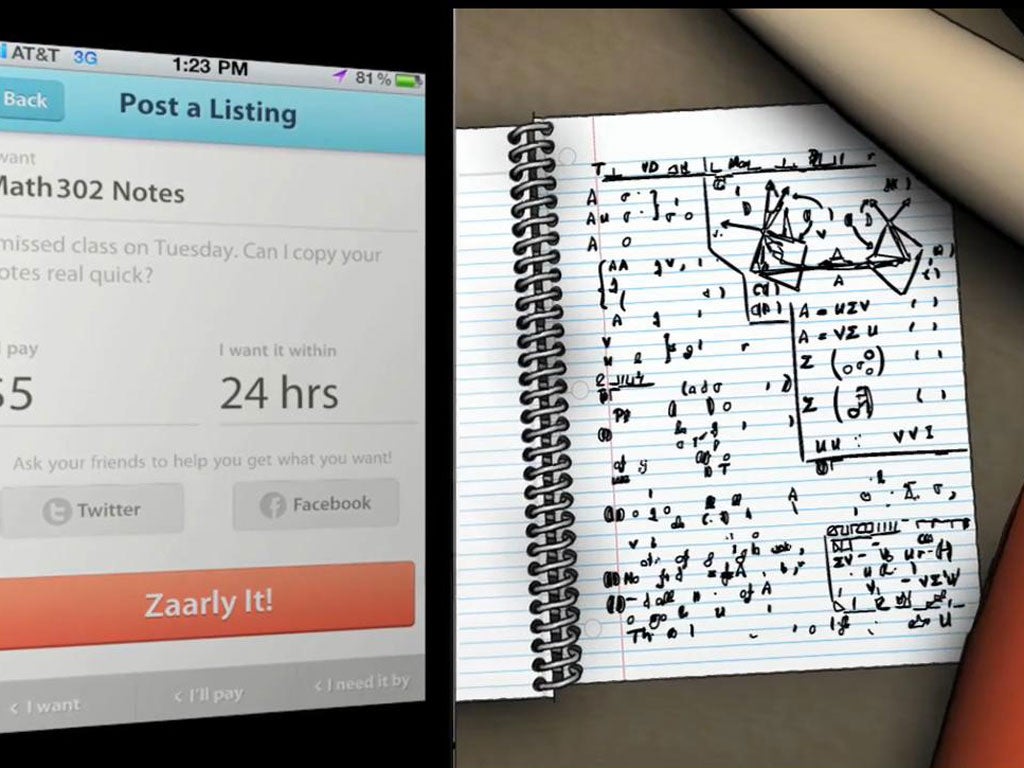Zaarly – terrible name, quite brilliant idea
Procurement! Possibly the least exciting thing to be given a cool web 2.0 makeover since the social paint-drying-watching app M@tGloss....
But let's not hold that against Zaarly, a start-up site/app from entrepreneurs Bo Fishback, Eric Koester and Ian Hunter, which actually does make the whole process of putting projects out to tender seem like quite an exciting one.
In a nutshell – and you can watch a fairly excruciating video at zaarly.com if you don't believe me – Zaarly works as a localised procurement system. To use their example, if you need a wedding DJ in Bristol on 24 August 2012, you add a listing to Zaarly's database with the details and how much you're willing to pay and watch the bids from DJ Stu's Mobile Disco et al to flood in.
But will it catch on? Possibly not. Early investors included Ashton Kutcher (who's described on Zaarly's site as a "fan and power user"). The site launched in the US last May but, one month after that, was declared "dead" in the key market of New York City by The New York Observer's Beta Beat blog.
But a recent rush in funding in October and the addition of the former eBay CEO Meg Whitman to its board of directors has given the site an impetus for a bigger push. The homepage of zaarly.com suggests a global launch is imminent, which means UK users in need of a competitive bid for a hedge-trimmer or a plumber ("will pay: anything! – need by: NOW!) will have somewhere to go.
Who would choose to live in a billboard house like this?
A few months ago The Ideas Factory looked at a property developer's proposal for a new Piccadilly Circus-like billboard-funded development in east London's "silicon roundabout".
The idea behind thatwas to house an office complex, but Apostrophy's, a Thai design agency with a disdain for grammar, has taken the idea a step further by creating a living space made out of a giant LED billboard advert. Which means that the product being flogged can animate or change. It'd be like living behind that giant Sanyo sign, basically.
Sat on a lengthy trailer base, the "house" has two floors, which include a pantry, a terrace, a home theatre and a bedroom. There are solar cells to generate energy and plants for food.
As depressing as the idea of living in an advert is, all it makes us think of is "The Chicken Roaster" episode of Seinfeld, in which Kramer's flat is turned red by the giant neon chicken sign. It's not way to live, Jerry.
More: ind.pn/liveinad
Watch Dubai's rapid growth
The expansion of Arabian cities and emirates over the past two decades is breathtaking.
But none have boomed (and busted and boomed) quite so much as Dubai in the United Arab Emirates. Perhaps the emirates' most famous project has been the twin artificial island developments, The World and The Palm, which expanded the bustling limits of Dubai into the Persian Gulf.
You can witness the growth of these projects – plus the rest of Dubai's construction explosion – in an amazing set of Advanced Airborne Thermal Emission and Reflection Radiometer images images taken from Nasa's Terra satellite over the last 11 years.
It's really quite something. See the complete set of images here: ind.pn/dubgrow
Mapping kitty's movements on his evening prowls
As our feature on the global positioning system and its limits (see related links) points out, one of the problems with the technology is that it can be easily hacked and played with.
That led the Ideas Factory brains trust (membership: one) to spend half an hour scouring the web for the most inventive GPS hacks.
It's hard to imagine that any will be better than Australian gadget twiddler Ben Buxton (aka blogger Buxtronix) who decided to see where his Russian blue cat, Ash, roams at night.
Buxton fitted Ash's collar with a dinky GPS module from online electronics store SparkFun (sadly, cat stalkers, it's no longer available).
The data of where Ash had spent his evenings mouse-hunting was collected by the GPS device, transferred to a small SD memory card via a small data logging chip and powered by a small battery. All small enough to fit onto the mog's collar.
When Ash returned from his prowling, the SD card was then plugged into Buxton's computer, converted and overlaid onto Google Maps, giving a fairly accurate depiction of where the cat spends his evenings.
You may or may not be shocked to learn that Ash spent the night roaming around in Buxton's and his neighbours' gardens...
Read the whole explanation at Buxton's website: buxtronix.net
Send us your factory fuel
Seen a good idea? Email w.dean@independent.co.uk or tweet @willydean

Join our commenting forum
Join thought-provoking conversations, follow other Independent readers and see their replies
Comments